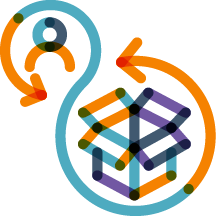Professional Scrum Competency: Managing Products with Agility
 Managing Products with Agility results in products that provide valuable business outcomes, increased flexibility to respond to change, and greater transparency for investment decisions in product development. A clear and understandable Product Vision helps to align product development with the organization’s Business Strategy including strategic goals and/or business vision, while a focus on Product Value addresses the continuous improvements to the product to meet customer needs. Product Value includes considerations such as greater transparency in value-based decisions and organization-wide, value-driven approaches. Key tenets of this Focus Area include continuously defining value, measuring actual value realized, validating assumptions, and analyzing trends.
Managing Products with Agility results in products that provide valuable business outcomes, increased flexibility to respond to change, and greater transparency for investment decisions in product development. A clear and understandable Product Vision helps to align product development with the organization’s Business Strategy including strategic goals and/or business vision, while a focus on Product Value addresses the continuous improvements to the product to meet customer needs. Product Value includes considerations such as greater transparency in value-based decisions and organization-wide, value-driven approaches. Key tenets of this Focus Area include continuously defining value, measuring actual value realized, validating assumptions, and analyzing trends.
The process of aligning Product Vision with Product Value is iterative and incremental, and it is managed through continuous refinement of the Product Backlog. Effective Product Backlog Management requires input and collaboration from a variety of Stakeholders and Customers - including the Scrum Team - and requires evolving techniques to ensure appropriate levels of transparency based on the needs of stakeholders. Similarly, Forecasting and Planning uses an iterative and incremental approach to manage complexity, change, and the realities of business obligations. Attention to these Focus Areas results in development and delivery of valuable product increments within 30 days or less. Additional features and benefits of these approaches include increased transparency to progress, more realistic and evolving forecasts to manage stakeholder expectations, and applying appropriate release, sales, contracting, and partnering strategies.
The Product Owner is typically focused on Managing Products with Agility, however, proficiency in this competency is required by all Scrum Team members, Agile Leaders, and organizational stakeholders to ensure that the full value of using the Scrum framework and an empirical process is achieved.
Key Focus Areas
This competency has the following key focus areas: